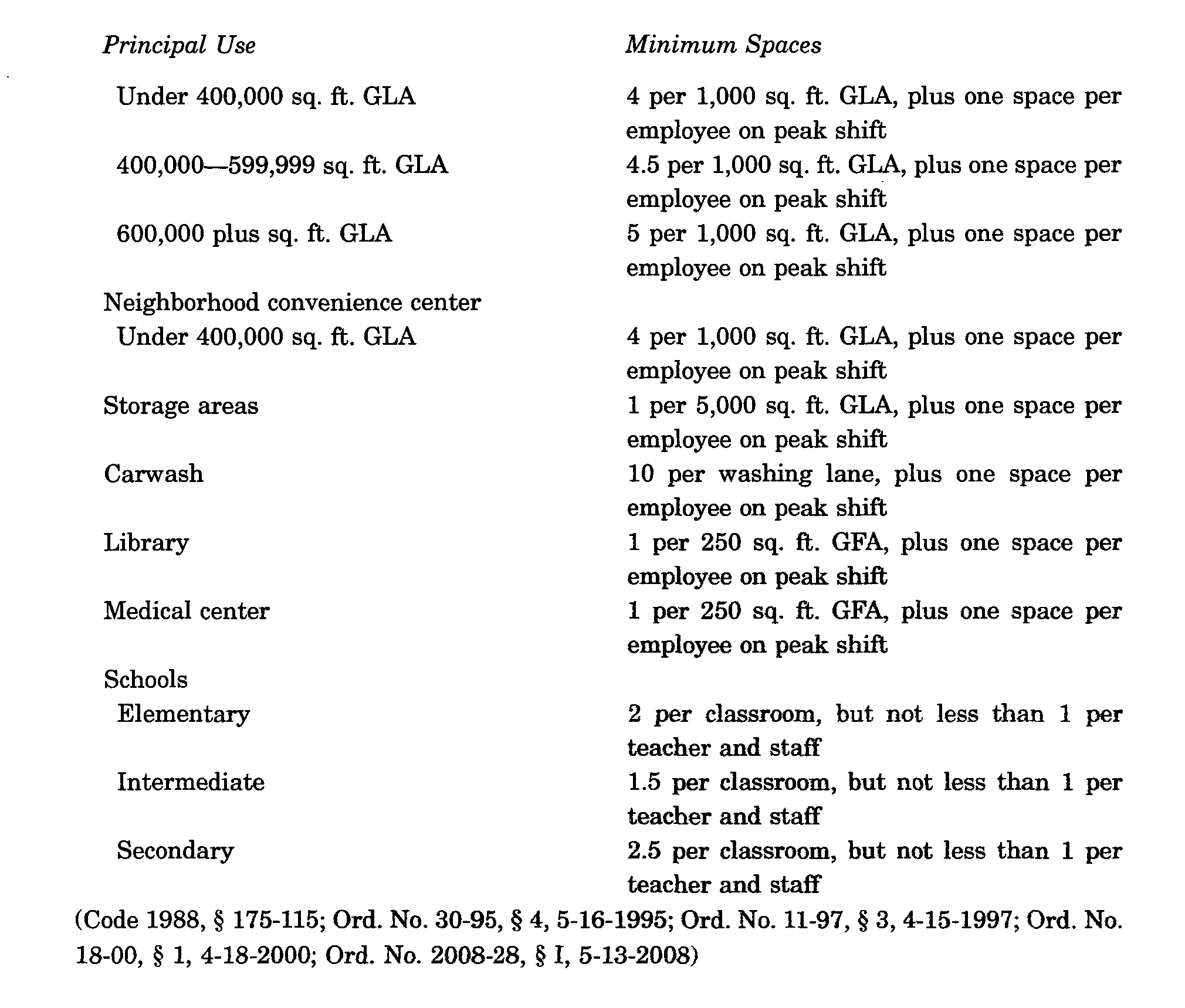
No garages accessory to single-family dwellings may be located in the property front yard in residential and mixed-use districts. Extensions of parking areas accessory to nonresidential uses in commercial or industrial areas are permitted in residential and mixed-use districts, at the discretion of the municipal agency as a conditional accessory use, subject to the following:�
(1) The parking area must be continuous and contiguous to the nonresidential use.�
�
(2) Access to the parking area is wholly within the commercial or industrial district.�
(3) The parking area must comply with all design standards and buffering requirements and must not interfere with the use and/or enjoyment of abutting residential properties. (Code 1988, § 175-116)�
At the discretion of the municipal agency, off-street parking in commercial districts may be provided at a noncontiguous site as a conditional use, subject to the following:�
(1) No part of any parking area shall be within 50 feet of any dwelling, school, house of worship or other institutional use located on an adjoining property.�
**Webmasters Note: The previous sections, 62-1767(a)(2)b.4. through 62-1792(1), have been amended as per Supplement No. 14.�
(2) Any noncontiguous parking area must comply with the yard requirements of the zoning district.�
(3) The parking area must comply with all design standards and buffering requirements and must not interfere with the use and/or enjoyment of abutting properties. (Code 1988, § 175-117)�
(a) Dimensional requirements. All parking spaces shall be designed in accordance with the following standards:�
(1) Commercial design criteria. Commercial design criteria shall be as follows:�

(2) Office, industrial research, distribution and residential design criteria. Office, industrial research, distribution and residential design criteria shall be as follows:�

(b) Width of parking space directly adjacent to wall, column or fence. A parking space directly adjacent to a wall, column or fence shall have a minimum width of ten feet.�
(c) Parking layout criteria. Parking layout criteria shall be as follows:�
(1) Parking stalls shall be identified by means of four- to six-inch painted lines.�
(2) Parking areas shall be separated from on-site access roadways by planted islands with a minimum of ten feet.�
(3) Parking stalls shall be provided with durable permanent curbing or well stops.�
(4) Any parking area having 30 or more parking stalls must employ landscaped parking islands, with a minimum width of eight feet.�
(5) Planted islands adjacent to a single row of parking stalls shall be a minimum of 100 square feet. Planted islands separating two rows of parking stalls shall be a minimum of 190 square feet.�
(6) The minimum topsoil depth in planted islands shall be two feet for shrubbery and four feet for trees, unless circumstances, such as drainage, warrant a modification to be approved by the township planning director.�
(7) No parking area shall be constructed in front of the front, rear and side setback lines.�
(8) All parking area landscaping shall be so located as not to unduly interfere with motorists' vision.�
(9) Any parking area with 50 or more parking stalls shall include pedestrian walkways elevated at least six inches above the parking area to improve the visibility of pedestrians.�
(10) All parking areas should be properly screened where headlights of vehicles within the area may not shine directly onto adjoining properties. Screens shall consist of earth berms and plantings. If a parking area abuts a residential use, conifer plants shall be employed, planted at five-foot intervals and not less than five feet in height, in addition to berming and fencing, at the discretion of the municipal agency and at the recommendation of the township planning director.�
(11) All parking areas shall be designed to comply with NJDEP nonstructural stormwater management requirements. (Code 1988, § 175-118; Ord. No. 2007-16, § I, 3-27-2007)�
(a) All commercial structures, excluding professional offices, shall provide one offstreet loading space 15 feet wide and 30 feet deep.�
(b) All offstreet loading areas shall be fully screened from a public street and shall be contained in the rear or side yards behind the setback line. No loading or unloading may be conducted from a public street.�
(c) Loading areas must contain a minimum of 15 feet in height clearance.�
(d) Loading areas shall be designed in such a manner so as not to interfere with the movement of vehicles or pedestrians.�
(e) Trailers shall not be used for permanent storage. (Code 1988, § 175-119)�
�
**Webmasters Note: The previous sections, 62-1792(2) through 62-1815, have been amended as per Supplement No. 9.�